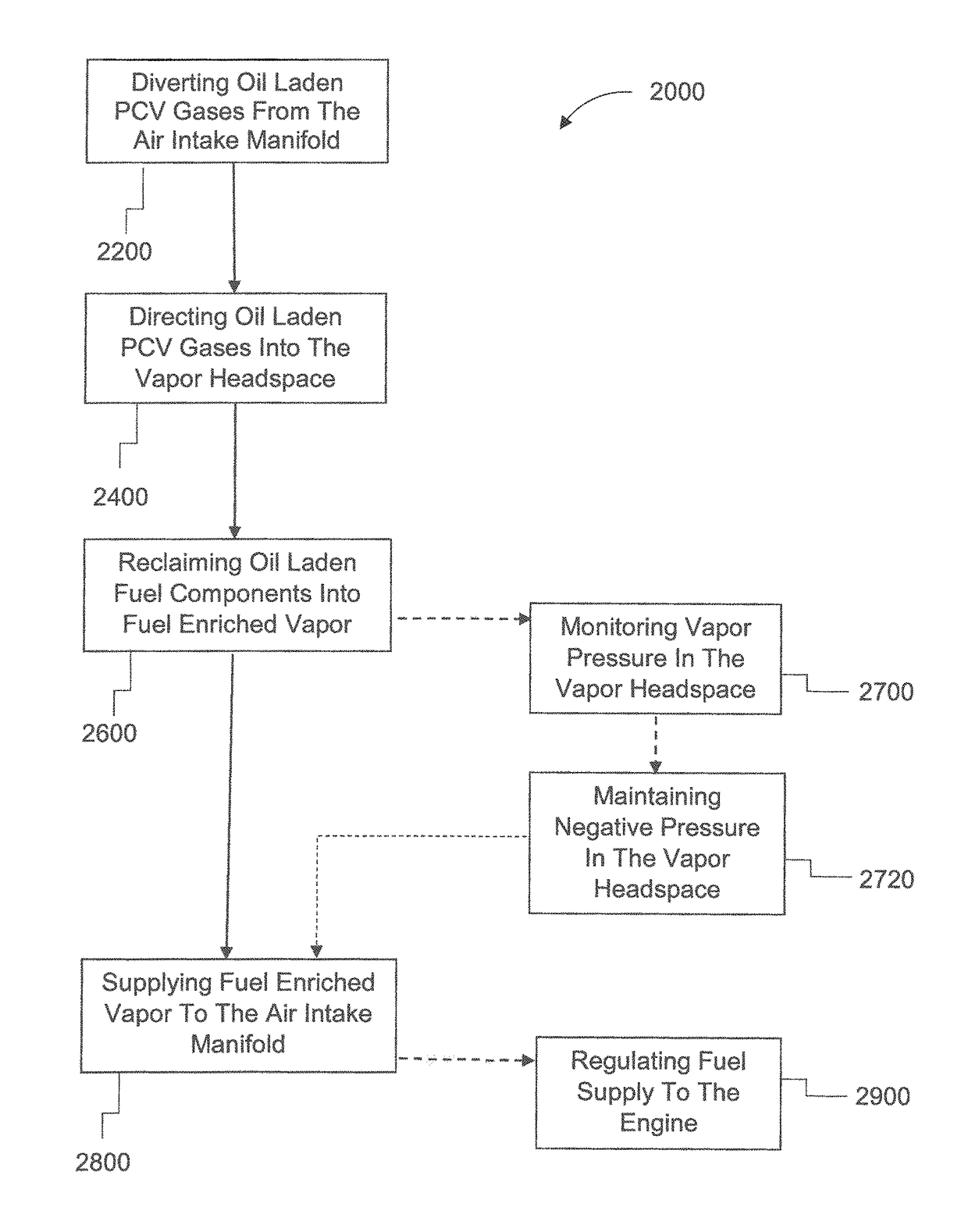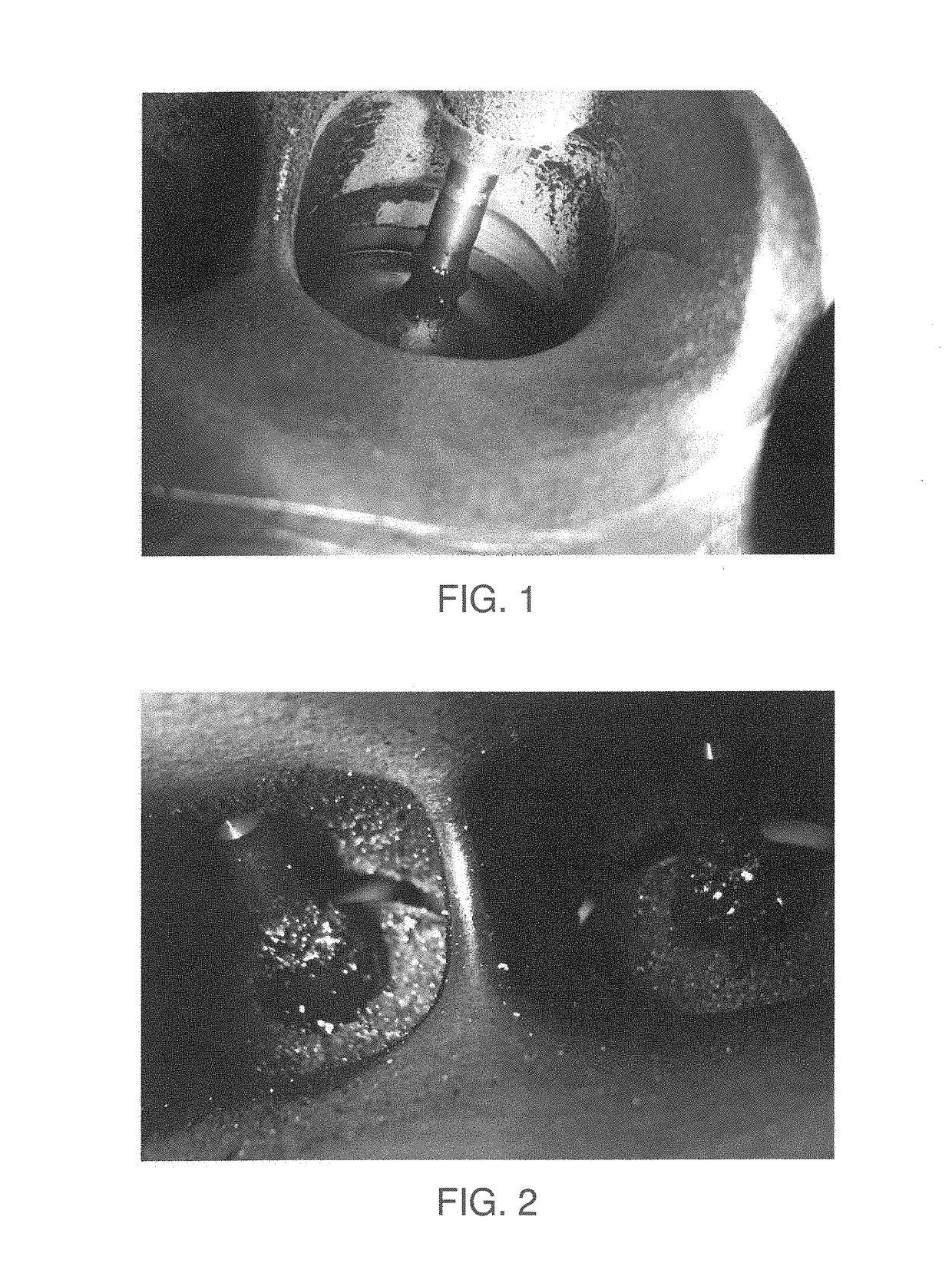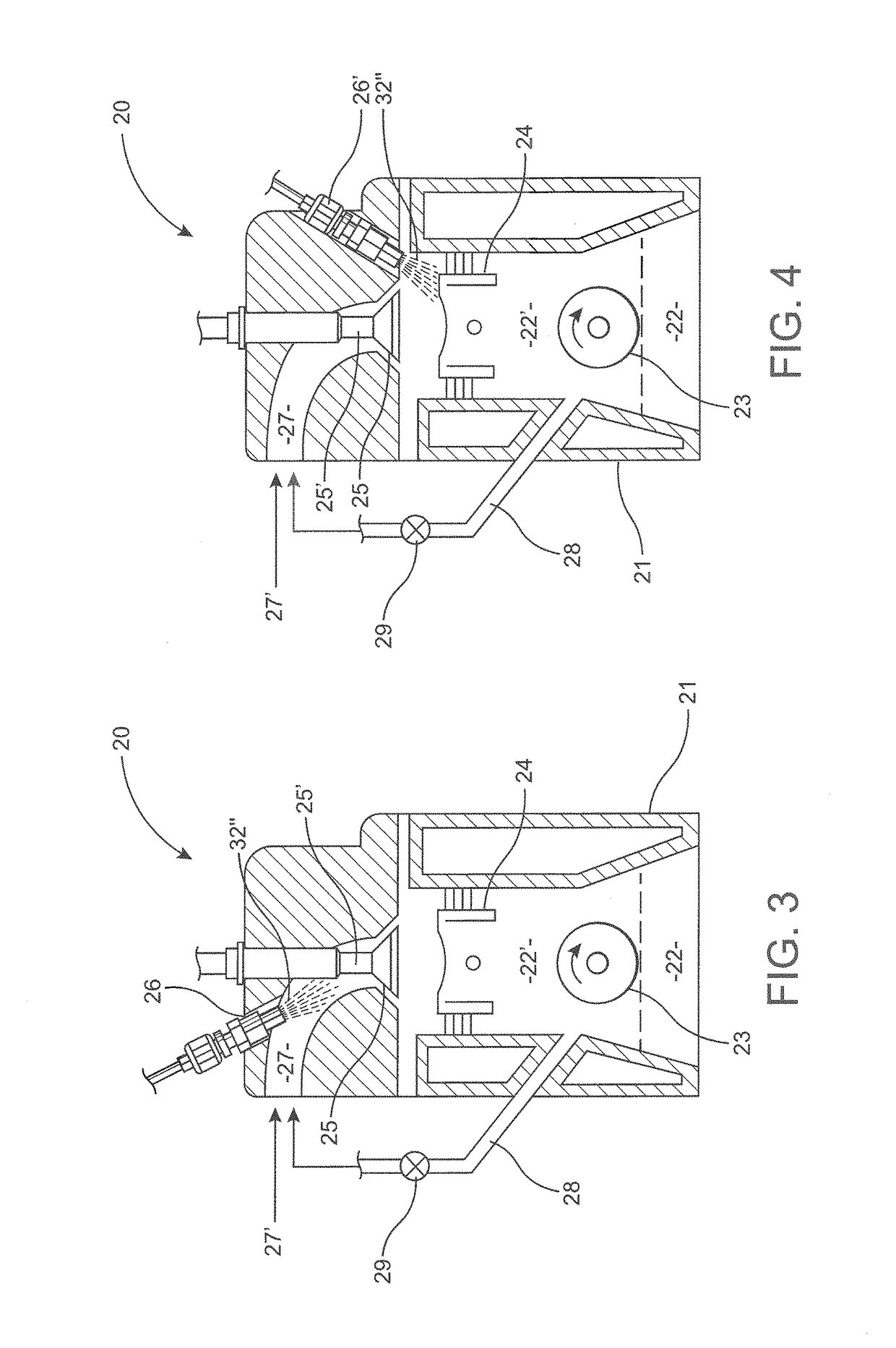Positive crankcase ventilation gas diversion and reclamation system
a technology of ventilation gas and crankcase, which is applied in the direction of liquid fuel feeders, machines/engines, electric control, etc., can solve the problems of premature engine failure, reducing engine efficiency, and unforeseen drawbacks of gdi engines, so as to reduce noxious emissions to the environment, improve air quality, and eliminate carbon buildup
- Summary
- Abstract
- Description
- Claims
- Application Information
AI Technical Summary
Benefits of technology
Problems solved by technology
Method used
Image
Examples
Embodiment Construction
[0038]FIG. 1 is a photograph of a valve and valve stem in an internal combustion engine employing a direct fuel injection system after being driven approximately 15,000 miles. As is apparent, especially when compared to the photograph of the valve and valve stem in FIG. 2, relatively little carbon buildup is visible on either the valve or valve stem after 15,000 miles of operation.
[0039]Conversely, the valve and valve stem in the photograph in FIG. 2, also of an internal combustion engine employing a direct fuel injection system but after being driven approximately 60,000 miles, show substantial visible amounts of carbon buildup on both the valve and valve stem. This visible carbon buildup is a result of engine oil which is entrained in oil laden positive crankcase ventilation (“PCV”) gases 22′, which are vented into an air intake manifold 27 of an internal combustion engine 20 having a direct fuel injector 26′, as shown best in FIG. 4.
[0040]FIG. 3 is a cross-sectional view of a por...
PUM
 Login to View More
Login to View More Abstract
Description
Claims
Application Information
 Login to View More
Login to View More - R&D
- Intellectual Property
- Life Sciences
- Materials
- Tech Scout
- Unparalleled Data Quality
- Higher Quality Content
- 60% Fewer Hallucinations
Browse by: Latest US Patents, China's latest patents, Technical Efficacy Thesaurus, Application Domain, Technology Topic, Popular Technical Reports.
© 2025 PatSnap. All rights reserved.Legal|Privacy policy|Modern Slavery Act Transparency Statement|Sitemap|About US| Contact US: help@patsnap.com



